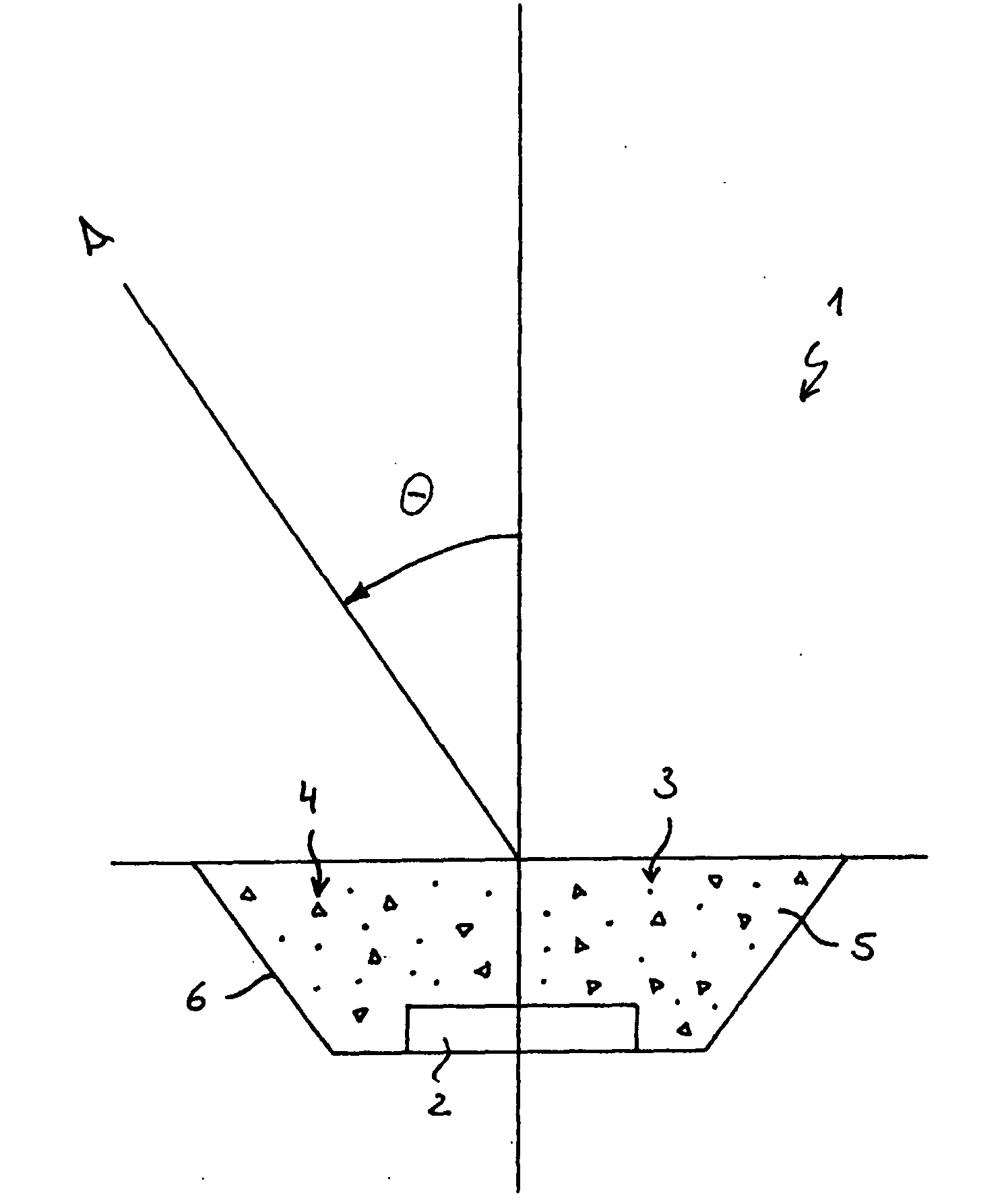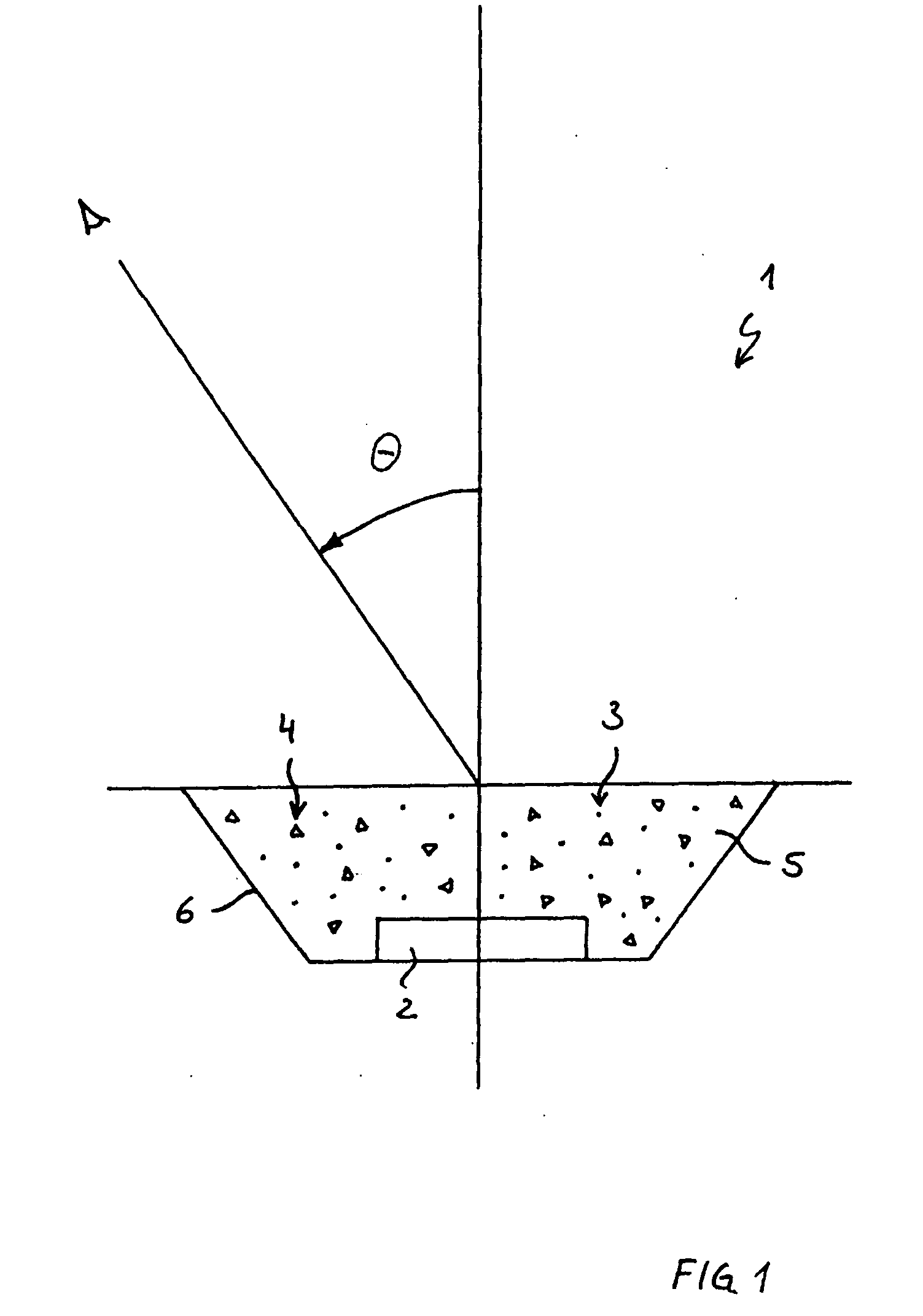Light emitting device with a non-activated luminescent material
a luminescent material and light-emitting device technology, applied in the direction of luminescent compositions, semiconductor devices, chemistry apparatus and processes, etc., can solve the problems of high requirements for diffusing particles, insufficient effect to remove directional dependence of blue light, and non-uniform emission characteristics, so as to achieve a strong scattering effect and increase the number of scattering events
- Summary
- Abstract
- Description
- Claims
- Application Information
AI Technical Summary
Benefits of technology
Problems solved by technology
Method used
Image
Examples
Embodiment Construction
[0056]FIG. 1 shows a light emitting device 1. The device has as radiation emitting element, including a semiconductor, a light-emitting diode (LED) 2. The LED 2 radiates for example blue light, upwardly with reference to the illustration. With regard to the electrical components which are necessary for the activation of the LED nothing is said here since they are without immediate relevance for the invention. In this regard attention is directed to the state of the art.
[0057]Furthermore the device 1 has a luminescent material in the form of fluorescent particles 3. The fluorescent particles 3, also called luminescent material particles, are able to absorb a part of the radiation which is sent out by the LED 2 and to send out light with a wavelength which is different from the wavelength of the absorbed radiation. The radiation sent out by the luminescent material particles 3 can for example be yellow light. In the case of the radiation which is sent out by the LED 2 and is absorbed ...
PUM
 Login to View More
Login to View More Abstract
Description
Claims
Application Information
 Login to View More
Login to View More - R&D
- Intellectual Property
- Life Sciences
- Materials
- Tech Scout
- Unparalleled Data Quality
- Higher Quality Content
- 60% Fewer Hallucinations
Browse by: Latest US Patents, China's latest patents, Technical Efficacy Thesaurus, Application Domain, Technology Topic, Popular Technical Reports.
© 2025 PatSnap. All rights reserved.Legal|Privacy policy|Modern Slavery Act Transparency Statement|Sitemap|About US| Contact US: help@patsnap.com



